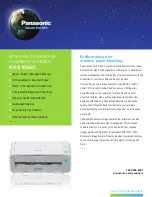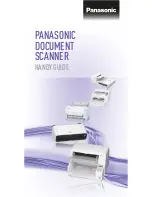
80
properly adjust air/fuel mixture
and ignition timing for varying
engine load and altitude
conditions.
Automatic
Temperature
Control (ATC)
Maintains a relatively constant
intake air temperature.
Auxiliary Air
Control valve
(AAC)
The ECU uses the AAC to
adjust idle speed by changing
the amount of air bypassing the
throttle plate. Idle speed
increases as more air
bypasses the throttle through
the AAC.
Back Pressure
Transducer Valve
(BPT)
Bleeds off vacuum signal to
EGR valve when operation is
not desirable.
BPT
See Back Pressure
Transducer.
Bypass Control
System
The Bypass Control system
includes a bypass valve,
bypass control diaphragm,
bypass control solenoid and 2
separate intake paths in the
intake manifold. The Engine
Control computer selects the
proper air path based on
present operating conditions.
One path provides high engine
torque at low RPM’s while the
other path produces high
output at high RPM’s.
Camshaft
Position Sensor
Sends camshaft speed and
position information to the ECU
for spark timing or fuel injector
control.
CAN
See Canister.
Canister (CAN)
The canister collects vapors
from the fuel tank, preventing
them from escaping into the
atmosphere and causing
pollution. During warm engine
cruise conditions these vapors
are drawn into the engine and
burned.
Canister Control
Solenoid valve
Adjusts the amount of canister
“purge” - the flow of vapors out
of the canister.
Canister Purge
solenoid
This device controls the flow of
fuel vapors from the canister to
the intake manifold.
CANP
See Canister Purge Solenoid.
CCE
Computer Controlled Emission
system.
CE
See Check Engine light.
CEC
Computerized Engine Control.
Check Engine
light (CE)
The Check engine light comes
on when the ignition is turned
on. It should go off a few
seconds after the engine is
started. The Check Engine light
turns on to signal a problem.
Some vehicles display trouble
codes by flashing this light.
Closed Loop (C/L)
This is when a control system
performs an action (expecting a
certain result), then checks the
results and corrects its actions
(if necessary) until the desired
results are achieved. Example:
The ECU pulses a fuel injector
expecting a certain amount of
fuel to be delivered. In closed
loop operation, the ECU uses a
sensor to check the actual
amount of fuel delivered. The
ECU will correct the injector
pulse width as necessary to
obtain the desired fuel delivery.
Clutch Start
Switch
Enables the Starter Relay when
the clutch is depressed.
Clutch Switch
This switch tells the ECU when
the clutch is engaged.
CO
Carbon Monoxide. Colorless,
odorless and poisonous
byproduct of fuel combustion.
Cold Start Injector
Delivers additional fuel for
starting a cold engine.
Condenser
Also referred to as a Capacitor.
This is an electronic device that
stores an electrical charge.
They are often used to reduce
electrical noise.
Continuity
An unbroken, continuous circuit
through which an electric
current can flow.
Coolant
Temperature
Sensor (CTS or TW)
This sensor is a thermistor - a
resistor whose resistance
changes with temperature. The
hotter the sensor gets, the lower
the resistance becomes. The
sensor is threaded into the
engine block to give it direct
contact with the engine coolant.
The ECU uses engine
temperature to properly control
air/fuel mixture, spark advance,
idle speed and emission device
operation (such as EGR valve).
Coolant
Temperature
Switch (CTS)
A switch that opens or closes
depending on coolant
temperature.
Crankshaft Angle
sensor (CRANK)
The Crankshaft angle sensor is
mounted in the distributor. It
sends crankshaft speed and
position information to the ECU
for spark timing or fuel injector
control.
Crk/Cyl Sensor
Crankshaft/Cylinder Sensor.
Detects position of Crankshaft
and #1 Cylinder. Used by the
ECU for spark timing or fuel
injector control.
Summary of Contents for Code Scanner CP9025
Page 49: ...49 NISSAN...









































